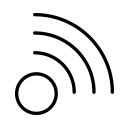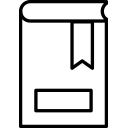Dairy
Dairy refers to milk and products made from milk from an animal. Sometimes "dairy" is also used to include eggs.
Dairy is most often used for
Last Updated:October 13, 2024
Dairy is weakly suspected to contribute to acne due to growth factors like androgens and IGF-1 that enhance androgen signaling. However, there is not enough evidence to establish a strong relationship between dairy consumption and acne.
Acne, or as it is technically called Acne Vulgaris, has historically been linked to dairy (and is the most commonly reported dietary association with acne[1]).
Acne can be furthered and made worse by excessive insulin secretion[2] and appears to also be exacerbated by IGF-1[3] and glucose-dependent insulinotropic polypeptide (GIP). In the case of IGF-1, there are repeated correlations between those with acne and higher serum IGF-1 concentrations.[4][5]
These systemic factors appear to be induced following dairy consumption with insulin, IGF-1,[6] and GIP (which acts to further induce insulin[7]) being increased to levels greater than that of an equicaloric portion of meat (as a comparative protein source).
When looking at serum anabolic factors, dairy protein appears to induce some of these factors to a greater degree than other protein sources
Insulin and IGF-1 both act upon the insulin receptor, the typical signalling pathway includes signalling via PI3K to mTOR/Akt which then induces nuclear ejection of FOX01.[8]
This nuclear ejection of FOX01 tends to be seen as anabolic, as the presence of FOX01 in the nucleus per se is anti-anabolic and ejection hinders its actions.[9][10][11] By facilitating anabolic signalling FOX01 ejection can augment androgen-dependent or insulin-receptor (mTOR dependent) anabolism, both the androgen pathway[12] and the mTOR/Akt pathway (downstream of the insulin receptor)[13] increase sebaceous lipogenesis (production of lipids in sebocytes, these cells being skin cells that have a high likelihood of acne production) and activation of the mTOR/Akt pathway can augment androgen signalling.[14]
Anything that activates mTOR/Akt can plausibly increase the efficacy of androgen signalling. Activation of the insulin receptor reliably activates mTOR/Akt (and IGF-1 also acts on this receptor) and is thought to be the main player as there are correlations between diet, insulin and IGF-1 (known to reflect the diet), and acne in humans
Interventions
A few studies have claimed that reducing total insulinogenic secretions of the diet (limiting grains and dairy) would be beneficial in acne control[15][16] or at least that the link between dairy and acne requires more investigation.[17][18]
When looking at surveys, there does appear to be an increased risk of acne associated with dairy products although the relative risk ratios (ranging from 1.12[19]-1.44 depending on dairy product or 1.10-1.19[20]) appears to be weak.
There is a plausible link between dairy consumption and acne but correlational research does not fully support this link; studies tend to be conducted in adolescents (rather than adults) and the results are not too in favor of a strong link; perhaps weak at best
There appears to be a more reliable link between IGF-1 per se than dairy products per se, and although the latter may spike the former current (limited) research does not support a strong relation between dairy and acne
Dairy By-products?
As both whey protein and casein protein are dairy byproducts, and thus can spike insulin and GIP levels, they are theoretically able to also induce acne.
- ^ROBINSON HMThe acne problemSouth Med J.(1949 Dec)
- ^Melnik BCEvidence for acne-promoting effects of milk and other insulinotropic dairy productsNestle Nutr Workshop Ser Pediatr Program.(2011)
- ^Deplewski D, Rosenfield RLGrowth hormone and insulin-like growth factors have different effects on sebaceous cell growth and differentiationEndocrinology.(1999 Sep)
- ^Aizawa H, Niimura MElevated serum insulin-like growth factor-1 (IGF-1) levels in women with postadolescent acneJ Dermatol.(1995 Apr)
- ^Cappel M, Mauger D, Thiboutot DCorrelation between serum levels of insulin-like growth factor 1, dehydroepiandrosterone sulfate, and dihydrotestosterone and acne lesion counts in adult womenArch Dermatol.(2005 Mar)
- ^Hoppe C, Mølgaard C, Juul A, Michaelsen KFHigh intakes of skimmed milk, but not meat, increase serum IGF-I and IGFBP-3 in eight-year-old boysEur J Clin Nutr.(2004 Sep)
- ^Salehi A, Gunnerud U, Muhammed SJ, Ostman E, Holst JJ, Björck I, Rorsman PThe insulinogenic effect of whey protein is partially mediated by a direct effect of amino acids and GIP on β-cellsNutr Metab (Lond).(2012 May 30)
- ^Melnik BCFoxO1 - the key for the pathogenesis and therapy of acneJ Dtsch Dermatol Ges.(2010 Feb)
- ^Kim SJ, Winter K, Nian C, Tsuneoka M, Koda Y, McIntosh CHGlucose-dependent insulinotropic polypeptide (GIP) stimulation of pancreatic beta-cell survival is dependent upon phosphatidylinositol 3-kinase (PI3K)/protein kinase B (PKB) signalling, inactivation of the forkhead transcription factor Foxo1, and down-regulation of bax expressionJ Biol Chem.(2005 Jun 10)
- ^Melnik BCIs nuclear deficiency of FoxO1 due to increased growth factor/PI3K/Akt-signalling in acne vulgaris reversed by isotretinoin treatmentBr J Dermatol.(2010 Jun)
- ^Melnik BCThe role of transcription factor FoxO1 in the pathogenesis of acne vulgaris and the mode of isotretinoin actionG Ital Dermatol Venereol.(2010 Oct)
- ^Makrantonaki E, Zouboulis CCTestosterone metabolism to 5alpha-dihydrotestosterone and synthesis of sebaceous lipids is regulated by the peroxisome proliferator-activated receptor ligand linoleic acid in human sebocytesBr J Dermatol.(2007 Mar)
- ^Smith TM, Gilliland K, Clawson GA, Thiboutot DIGF-1 induces SREBP-1 expression and lipogenesis in SEB-1 sebocytes via activation of the phosphoinositide 3-kinase/Akt pathwayJ Invest Dermatol.(2008 May)
- ^Fan W, Yanase T, Morinaga H, Okabe T, Nomura M, Daitoku H, Fukamizu A, Kato S, Takayanagi R, Nawata HInsulin-like growth factor 1/insulin signaling activates androgen signaling through direct interactions of Foxo1 with androgen receptorJ Biol Chem.(2007 Mar 9)
- ^Melnik B{Acne vulgaris. Role of diet}Hautarzt.(2010 Feb)
- ^Melnik BC, Schmitz GRole of insulin, insulin-like growth factor-1, hyperglycaemic food and milk consumption in the pathogenesis of acne vulgarisExp Dermatol.(2009 Oct)
- ^Bhate K, Williams HCEpidemiology of acne vulgarisBr J Dermatol.(2012 Dec 4)
- ^Danby FWAcne and milk, the diet myth, and beyondJ Am Acad Dermatol.(2005 Feb)
- ^Adebamowo CA, Spiegelman D, Danby FW, Frazier AL, Willett WC, Holmes MDHigh school dietary dairy intake and teenage acneJ Am Acad Dermatol.(2005 Feb)
- ^Adebamowo CA, Spiegelman D, Berkey CS, Danby FW, Rockett HH, Colditz GA, Willett WC, Holmes MDMilk consumption and acne in teenaged boysJ Am Acad Dermatol.(2008 May)




